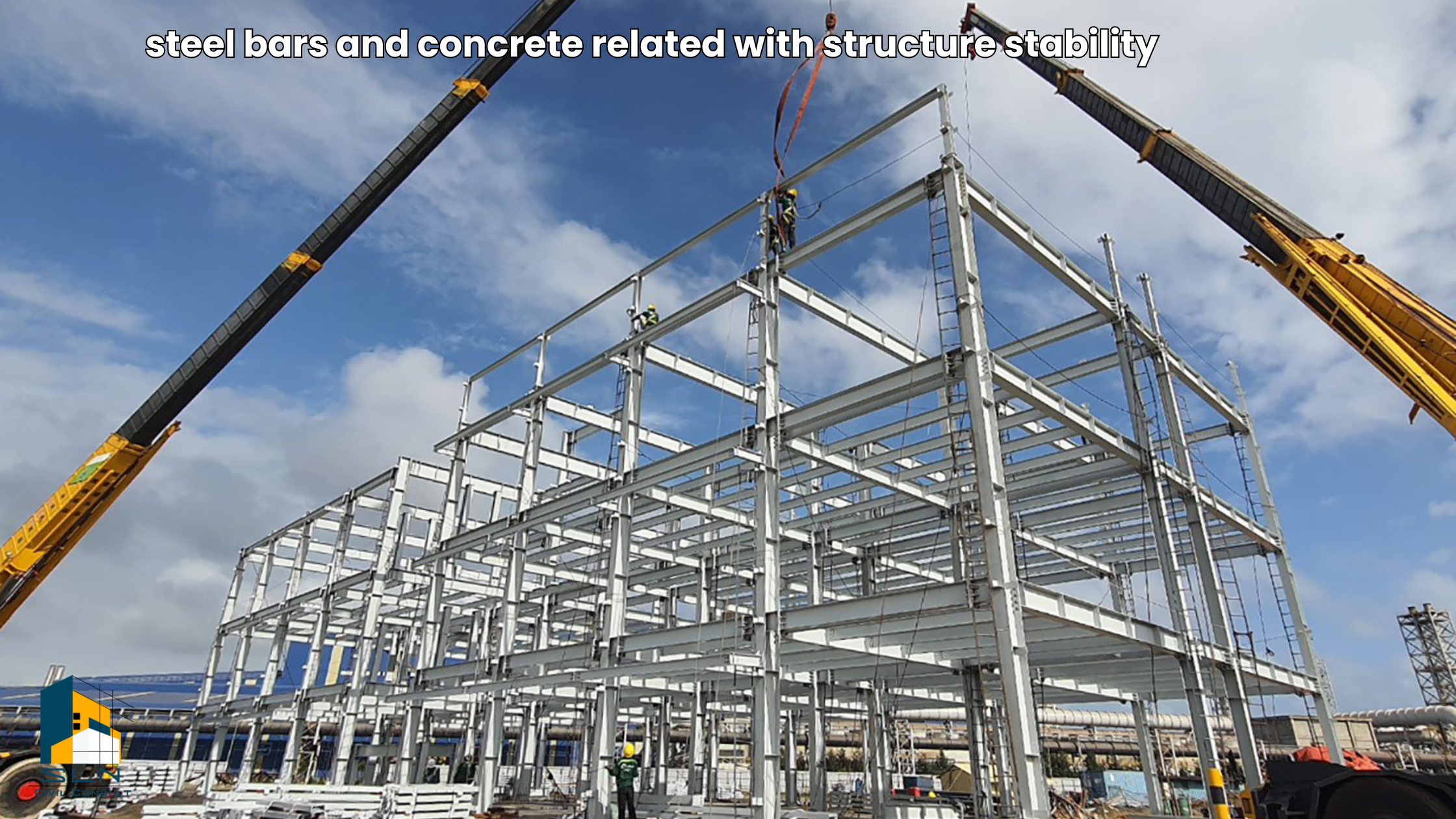In modern construction, steel and concrete are the two most powerful materials that define the strength, safety, and durability of a building. When used together, they create a structural system that can bear immense loads, resist natural forces, and stand strong for decades.
But how exactly do steel and concrete work together in a structure? Let’s explore the science, engineering logic, and real-world applications behind this powerful combination.
1. The Unique Strengths of Steel and Concrete
Concrete – The Master of Compression:
Concrete is strong when it’s being squeezed or compressed. That’s why it’s perfect for parts of a structure that bear heavy loads — such as columns, beams, and foundations. However, concrete has a weakness — it cracks easily when pulled or stretched, meaning it has low tensile strength.
Steel – The Master of Tension:
Steel, on the other hand, has very high tensile strength. It can handle pulling and bending forces without breaking. But steel alone can deform under heavy compression or corrode when exposed to moisture.
When engineers combine concrete’s compressive strength with steel’s tensile strength, they create a perfect structural balance known as Reinforced Cement Concrete (RCC).
2. The Concept of Reinforced Cement Concrete (RCC)
RCC is the fusion of steel reinforcement bars (rebars) within concrete to create a material that can withstand both tension and compression.
In an RCC member (like a beam or slab):
– The upper portion of the beam faces compression when loads are applied.
– The lower portion faces tension.
Concrete efficiently handles the compression at the top, while steel reinforcement placed at the bottom handles the tension. This sharing of forces between the two materials ensures maximum stability and safety.
3. How the Bond Between Steel and Concrete Works
The secret behind the success of this partnership lies in their bonding and compatibility.
1. Strong Physical Bond:
Steel bars used in construction are usually ribbed or deformed. These ribs grip the concrete tightly, preventing slippage when the structure is loaded.
2. Thermal Compatibility:
Steel and concrete expand and contract at almost the same rate when temperatures change. This thermal similarity prevents internal stresses and cracks.
3. Chemical Protection:
Concrete provides an alkaline environment that protects steel from rust and corrosion. The outer concrete cover acts as a natural shield for the reinforcement bars.
Together, these properties make RCC a composite material that behaves as a single, unified structure under all types of loads.
4. Load Distribution in RCC Members
When a structure like a slab or beam carries weight:
– The top zone experiences compression.
– The bottom zone experiences tension.
Concrete takes care of the compression, while steel bars — placed strategically in the tension zones — carry the tensile forces.
This interaction ensures that the structure:
– Resists bending,
– Remains crack-free, and
– Maintains its shape even under varying load conditions.
This principle is also used in columns, bridges, foundations, and retaining walls — where different load types act simultaneously.
5. The Importance of Proper Reinforcement Design
The effectiveness of steel and concrete depends on how well they’re designed and placed.
Key Design Considerations:
– Placement of Bars: Reinforcement must be placed exactly in the tension zones.
– Spacing and Diameter: Correct spacing ensures uniform stress distribution and prevents cracking.
– Concrete Cover: A protective layer of concrete over steel prevents corrosion and fire damage.
– Load Calculation: Engineers calculate bending moments, shear forces, and axial loads to determine the exact reinforcement needed.
Even a perfectly mixed concrete will fail if steel placement or anchorage is wrong — which shows how crucial design detailing is in achieving structural stability.
6. Real-World Applications of Steel-Concrete Combination
The steel–concrete system is used in almost every type of structure today:
– Residential and Commercial Buildings
– High-Rise Towers and Skyscrapers
– Bridges and Flyovers
– Industrial Sheds and Parking Structures
– Dams and Water Tanks
Each of these structures relies on the same basic engineering principle — steel for tension, concrete for compression, and both working together in perfect harmony.
7. The Science of Stability and Safety
Why RCC Structures Are So Reliable:
– Load Sharing: Forces are distributed efficiently between concrete and steel.
– Ductility: Steel provides flexibility, allowing structures to bend slightly under heavy load instead of collapsing suddenly.
– Crack Control: Steel bars control crack width and keep them within safe limits.
– Earthquake Resistance: RCC frames absorb and dissipate seismic energy effectively, making them safer in earthquake zones.
8. Future Innovations in Steel-Concrete Structures
Modern construction is evolving with advancements that enhance this classic combination:
– High-Strength Concrete (HSC) for lighter but stronger buildings.
– Corrosion-Resistant TMT Bars for durability in coastal or humid areas.
– Fiber-Reinforced Concrete (FRC) for better crack resistance.
– Smart Monitoring Systems embedded inside structures to detect stress and temperature changes.
These technologies are improving the performance, sustainability, and lifespan of reinforced concrete structures.
9. Conclusion: A Perfect Engineering Partnership
The collaboration between steel and concrete is one of the greatest achievements in civil engineering. It represents the perfect blend of strength and flexibility — a partnership that has shaped skylines and infrastructure across the world.
Concrete gives the body, steel gives the backbone. Together, they create structures that stand tall against time, weather, and nature.
No matter how much construction technology evolves, the bond between steel and concrete



